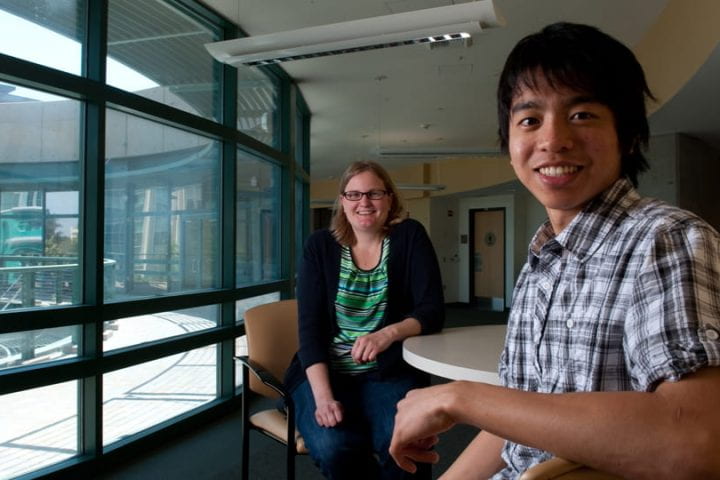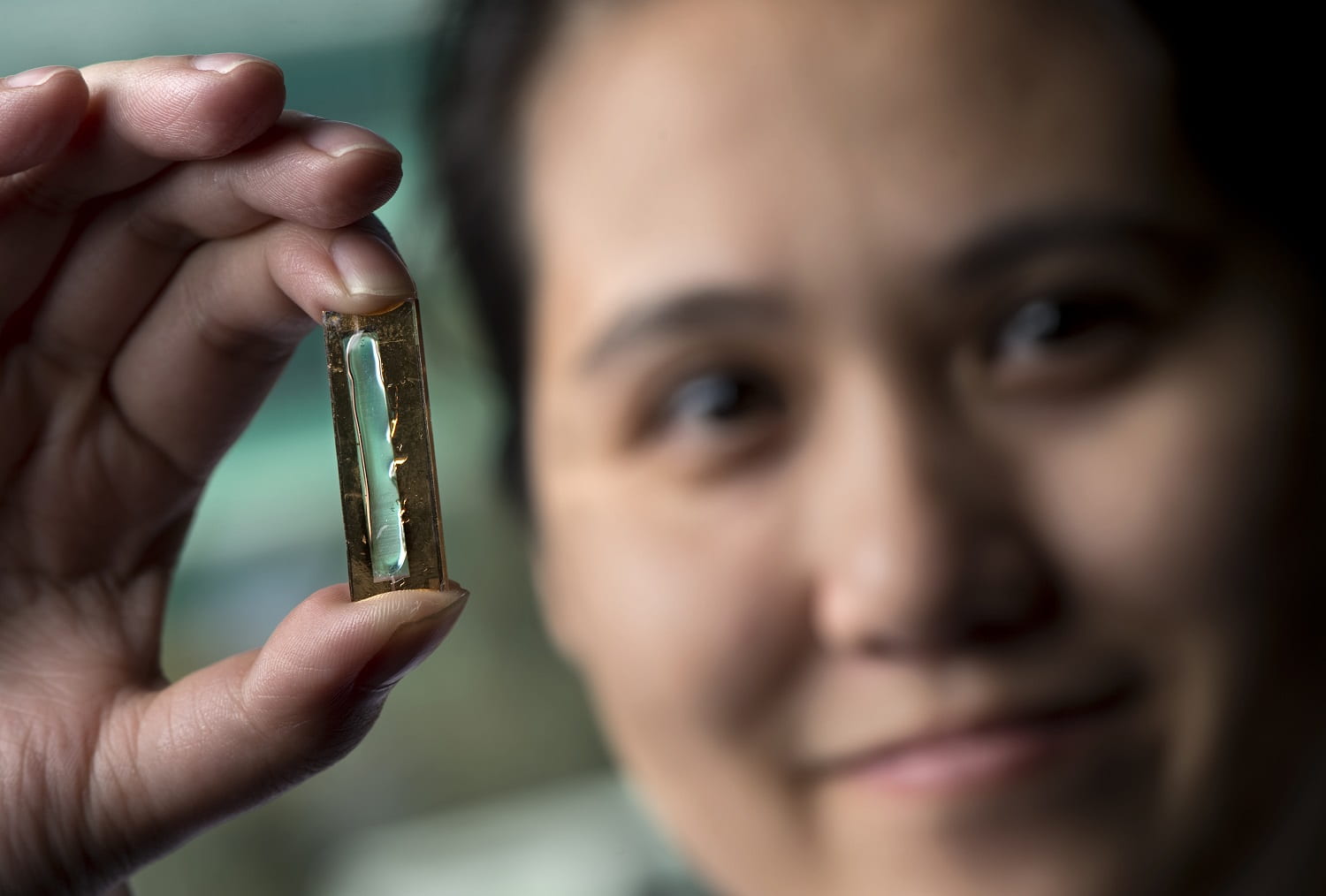Undergrad overachiever
Thanks to a UCI research program, junior Bryan Xie is already co-author of a groundbreaking study

Like a mother cooking for a picky eater, Bryan Xie spent months under the hood in a lab designing a chemical marker that he could feed to a living cell. The goal: to get that cell to consume the marker, light up with a reaction and allow researchers a good look at its structure.
Xie tried different recipes – chemical combinations really – working 20 to 25 hours a week alongside graduate students in the lab of Jennifer Prescher, UC Irvine assistant professor of chemistry, molecular biology & biochemistry, and pharmaceutical sciences.
The “foods” he concocted, called bio-orthogonal chemical reporters, are intended to be introduced into the naturally occurring biomolecules of a living system without interfering with the system’s functions. Xie was trying to use the cells’ dietary pathways to make that introduction, hoping the reporters would tag the biomolecules and make them more visible than they are under a standard microscope.
Let’s leave that pot simmering under the hood.
Xie, a third-year molecular biology & biochemistry major, came to UC Irvine determined to get a medical degree. Excelling in the freshman honors general chemistry sequence, he popped up on Prescher’s radar and was soon working in her lab and enrolled in the campus’s Undergraduate Research Opportunities Program.
Prescher is one of more than 400 UC Irvine faculty mentors in UROP, a Division of Undergraduate Education program designed to integrate undergrads into the university’s research culture. This year, the program provided funding to about 2,000 students – including Xie – who will present their research papers and projects Saturday, May 18, at an all-day UROP symposium in the Student Center.
Prescher credits campus leaders and UROP’s director, Said Shokair, for the level of participation at UC Irvine, which far exceeds what she’s seen at other schools around the country.
“I think we have a very well-run program – one of the best in the nation,” she says. “Research is of paramount importance at UCI, as is teaching. We try to incorporate undergraduate research into the classroom by giving students problem-solving opportunities in the lab. That’s when science is most exciting.”
Xie confirms that science came alive for him in the lab. Research fed his innate curiosity and enthusiasm to find answers – qualities essential in a world-class researcher. With funding from UROP and additional support from UC Irvine’s Summer Undergraduate Research Program, he was able to pursue lab work instead of finding an off-campus job.
“Through all this, I realized there was more to science than being a doctor,” Xie says. “So now I’m thinking of getting a combined M.D.-Ph.D. so I can practice and do clinical research, or maybe a Ph.D.-MBA for doing research and later partaking in management at a biotech company.”
And that’s how he found himself under the chemical hood in Prescher’s lab, trying to illuminate sugars on the surface of a cell. Anomalies in the structure and abundance of these sugars can be an indication of cancer, and developing a way to more easily discern them would have diagnostic and therapeutic value.
Xie teamed up with graduate students David Patterson, Lidia Nazarova and David Kamber to originate a chemical method of identifying cell-surface sugars. They devised a strained cyclopropene scaffold that they hoped could be appended to sugar molecules and ultimately incorporated into cell-surface structures. This would make the structures visible under a fluorescent probe via a highly selective reaction with the cyclopropene.
To gauge the group’s success, Xie isolated the modified sugars on cell surfaces via flow cytometry – a laser-based technology that suspends cells in a stream of fluid and passes them by an electronic detection apparatus – and watched to see if the cells took up the chemical reporter through metabolic processes.
His heart began beating a little faster. He called Prescher over to confirm what he was witnessing. Was it really working? Yes!
In 18 months, not long at all in the research world, Xie and his colleagues had designed a new bio-orthogonal chemical reporter. The resulting paper appeared in the Nov. 14, 2012, issue of Journal of the American Chemical Society, with Xie listed as a co-author.
He smiles modestly and gives much credit to the UROP program and his mentor, Prescher. And as Xie fidgets a bit in his chair, anxious to get back to the lab, Prescher says he’s not done yet: “I expect he’ll have one or two more papers published by the time he graduates.”

